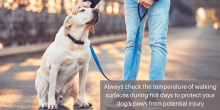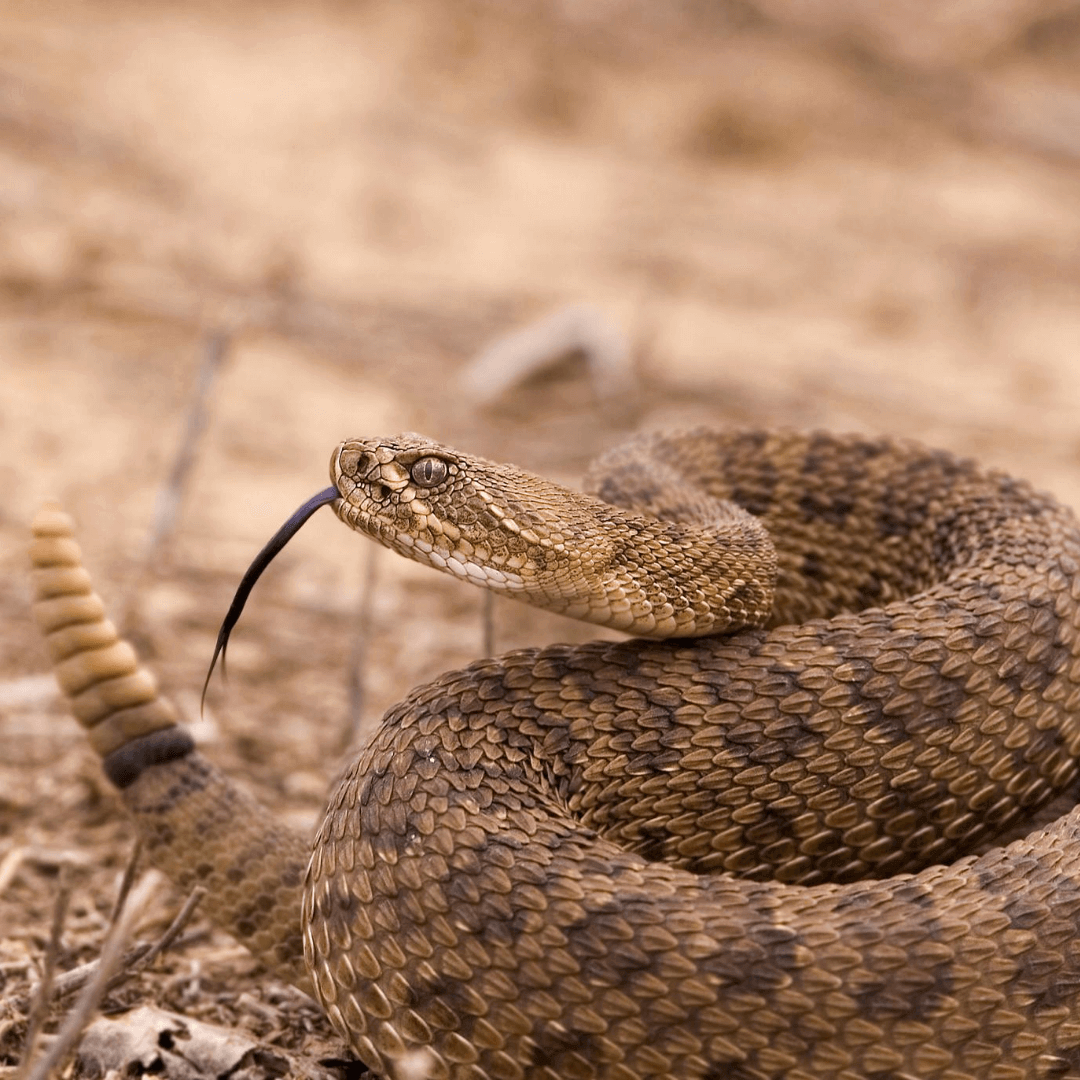By Nicole Abrego
Summer is in full swing! Whether you’re hitting the beach, exploring the trails, or just relaxing in your own backyard, enjoying the outdoors with our pets is the perfect way to live up to the #encinitaslife. As you and your furry companion are traveling about, be sure to keep an eye on these common hazards that lurk beneath your feet (and paws!).
Bee on the Lookout
Just like humans, our pets can be at risk for bee and wasp stings or even worse, can have severe reactions to them. Curious pups can get too close to bees or wasps (or even step on one) which may result in a painful sting usually around the muzzle, mouth, nose, face, or paws. Signs of a sting can range from very subtle to alarming and can include:
- Itching
- Swelling around sting site
- Crying or yelping
- Drooling
- Limping
- Scratching or chewing at sting site
- Difficulty breathing
- Fainting or collapse

If your pet is displaying any of these signs, they should be seen by a veterinarian immediately. To avoid a potential bee or wasp sting, keep your pet away from plants or flowers during walks as these insects tend to populate these areas. Always keep an eye on your pets while they are outdoors and check your home and yard for any bee hives or wasp nests and have them promptly removed.
Check the temp before you step!
Even with living in the coastal city of Encinitas, we do get our fair share of particularly hot days during the summer. One thing that us humans tend to not realize is that the surfaces we walk on can reach alarming temperatures, which could mean big trouble for our dog’s paws.

Hot surfaces such as asphalt, concrete, and sand can burn the sensitive paw pads of dogs, which may result in red or swollen paw pads or blisters and charred skin in severe cases. The best way to check if the temperature of the asphalt is too hot is to place your hand on the walking surface for 7 - 10 seconds. If it’s too hot for your hand, it’s too hot for your dog’s paws. Additionally, try to keep walks during the cooler parts of the day such as the early morning or evening.
Snakes... why’d it have to be snakes?
A variety of snake species are native all throughout California (which is bad news for a particular fictional treasure hunter). Unfortunately, cases of dogs being bitten by snakes, specifically rattlesnakes, significantly increase during the summer season as many people are taking their pups with them on walks or trails and snakes are more common during the warmer seasons.
Dogs are generally curious creatures and if they see something unfamiliar to them, such as a rattlesnake in the bushes, most pups will go to investigate. Additionally, this could lead to the pup getting too close and suffering a venomous bite. Rattlesnake bites are painful and could be fatal if not immediately treated by a veterinarian.
Signs that your pup may have suffered a snake bite include:
- Swelling or bruising around the bite site
- Bleeding from wound
- Shaking and tremors, seizures
- Excessive drooling
- Rapid, shallow breathing
- Vomiting
- Blood in urine
- Collapse or fainting
While on walks or hikes with your pet, keep your pet in your line of sight at all times and on a short leash to avoid them from wandering off the trail.
Pesky Foxtails
Southern California is home to an abundance of these barb-like flower clusters known as foxtails. Commonly seen on hiking trails, foxtails can become particularly dangerous for pets. Foxtails can easily lodge themselves into the ears, nose, mouth or between toes on a dog that travels through them. If not immediately removed, a foxtail can burrow through your pet’s skin and enter the body. Over time, the foxtail can make its way into internal organs such as the lungs and will require extensive surgery for removal.

Always examine your pet’s fur and body after they have been outside and immediately remove any foxtails that may have latched onto them. If you encounter a foxtail that can’t be removed on your own, take your pet to see a veterinarian for assistance.
We hope you have a fun time with your furry friends this summer and if you need to set up your pet’s next appointment, contact us here.
The Drake Center for Veterinary Care is an AAHA-accredited animal hospital located in Encinitas, CA. The Drake Center loves being a source of information for all pet owners across the country however if you have any questions regarding pet care and do not live in Encinitas, CA or surrounding cities, we encourage you to contact your local veterinarian.

